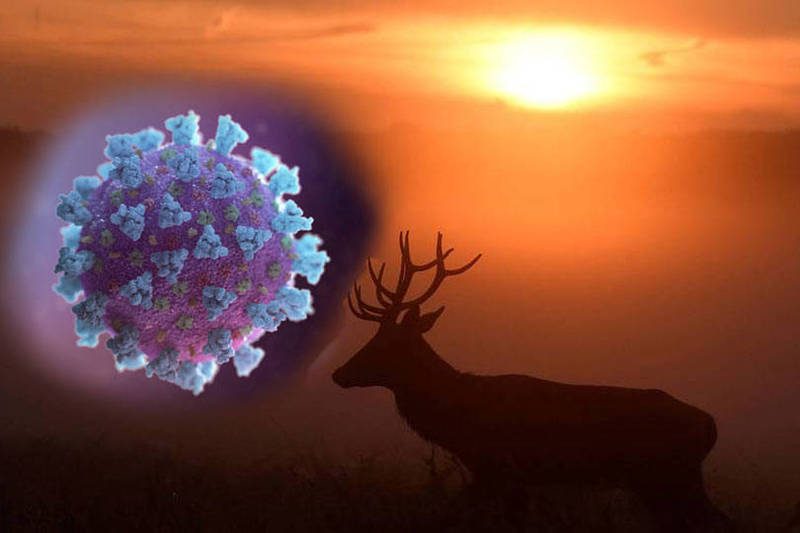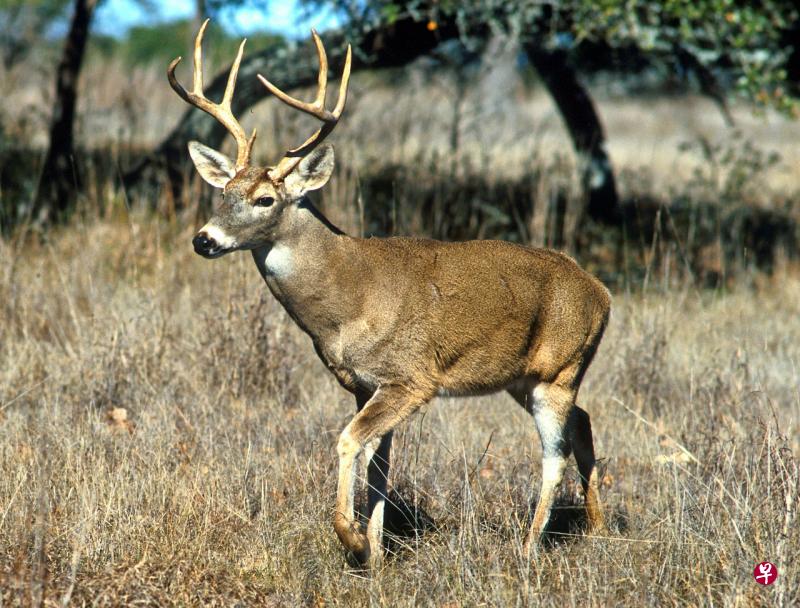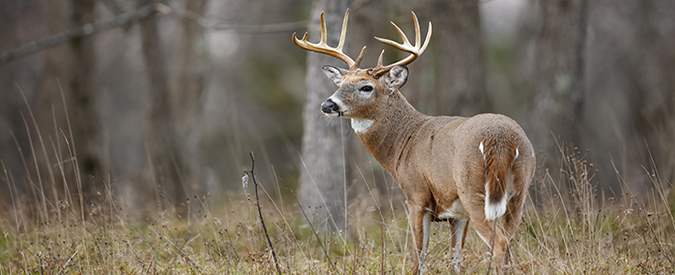美国野鹿大规模染新冠!专家忧变种后再传回人类
文章来源: 综合新闻
11/05/2021

爱荷华州的野生鹿群出现大规模的新冠肺炎(COVID-19)感染,专家担心病毒在野鹿身上变种,再传回给人类。(路透,本报合成)
美国一项研究发现,爱荷华州的野生鹿群出现大规模新冠肺炎(OVID-19)感染,将近3分之1的检测样本都证实染疫。研究团队指出,野鹿可能成为新冠肺炎的宿主,更担忧病毒会在野鹿等野生动物体内变种,再重新传染给人类。
综合外媒报导,这项研究由宾州大学、爱荷华州自然资源部门与爱荷华州大学进行。研究人员自去年4月到今年1月以来,收集了被猎人射杀、车辆撞死等野鹿的淋巴结样本。
研究发现,其中33%的鹿感染新冠肺炎。去年疫情恶化的时候,鹿群的感染状况也有扩散迹象。据去年研究指出,去年11月23日至今年1月10日期间,97隻鹿的样本中,有83%感染新冠肺炎。
研究人员担心病毒会持续在爱荷华州的野生动物中扩散,鹿也有可能成为动物宿主。若是病毒在鹿等新宿主之间传播发生变种,将会成为传染源,也可能将新变种病毒传给人类。
Nov 3, 2021
研究团队呼吁科学界应尽快找出积极有效的应对方式,更深入了解新冠肺炎病毒是如何在野生动物中进化,同时加强监察野生动物,找出潜在的动物宿主。

Tel: 551-580-4856 | Email: F.WINNIE.S@GMAIL.COM
北美法律公益讲座安排
时间:周二到周五 晚间
5:30-7:00(西部)
8:30-9:30(东部)
重播:第二天
上午9:00(西部时间)
中午12:00(东部时间)
周二: 遗嘱和授权书(Lisa讲)
周三: 数据泄露和个人身份保护&事业机会说明会
周四:北美常见法律问题(讲员Irene )
周五:小企业法律和员工福利(晶旌)
Zoom 6045004698,
密码:请扫码进群
另外:周三6:30(西部时间)美国专场
定期邀请美国律师联合讲座
Zoom 951 9092 9213
密码:请扫码进群

全球首起野生鹿确诊冠病
文 / 潘万莉
8/28/2021

(早报讯)美国农业部周五证实,在俄亥俄州验出全球首起鹿只确诊冠病的病例,目前尚不清楚染疫的野生白尾鹿如何接触到病毒。
此前,美国农业部曾通报过猫、狗、貂、老虎、狮子、雪豹、水獭、大猩猩等动物感染冠病,但大多数的案例都曾和染疫民众密切接触过。
美国农业部发言人柯尔表示,他们不知道确诊的鹿只为何会接触到病毒,但有可能是透过人类、环境、其他物种才被传染的。
据了解,俄亥俄州立大学兽医学院从今年1月至3月,从州内鹿只身上采集样本,并在学校内初步测出冠病阳性,后来送往美国农业部的国家兽医实验室展开进一步判定,最终确诊为冠病。
事实上,美国农业部上个月就曾指出,在伊利诺伊州、密歇根州、纽约州和宾夕法尼亚州白尾鹿种群的血清样本中,发现存在冠病抗体,但直到现在俄亥俄州的个案才证实鹿只染疫。
Confirmation of COVID-19 in Deer in Ohio
USDA
8/27/2021

Washington, D.C., August 27, 2021 — The United States Department of Agriculture’s (USDA) National Veterinary Services Laboratories (NVSL) today announced confirmation of SARS-CoV-2 (the virus that causes COVID-19) in wild white-tailed deer in Ohio. These are the first deer confirmed with the SARS-CoV-2 virus worldwide, although earlier studies have shown both that deer can be experimentally infected with the virus and that some wild deer had antibodies to the virus.
Samples from the deer were collected between January and March 2021 by The Ohio State University College of Veterinary Medicine as part of ongoing deer damage management activities. There were no reports of any deer showing clinical signs of infection.
Samples from the deer tested presumptive positive at The Ohio State University College of Veterinary Medicine and the cases were confirmed at NVSL. NVSL serves as an international reference laboratory and provides expertise and guidance on diagnostic techniques, as well as confirmatory testing for foreign and emerging animal diseases. Such testing is required for certain animal diseases in the United States in order to comply with national and international reporting procedures. The World Organisation for Animal Health (OIE) considers SARS-CoV-2 an emerging disease, and therefore USDA must report confirmed U.S. animal infections to the OIE.
SARS-CoV-2 infections have been reported in a small number of animal species worldwide, mostly in animals that had close contact with a person with COVID-19. At this time, routine testing of animals is not recommended. State, Tribal, local and territorial animal health and public health officials will work with USDA and the U.S. Centers for Disease Control and Prevention to make determinations about whether animals should be tested for SARS-CoV-2, using a One Health approach.
USDA will announce cases of confirmed SARS-CoV-2 in animals each time the virus is found in a new species. Confirmed cases in animals are posted at https://www.aphis.usda.gov/aphis/ourfocus/animalhealth/sa_one_health/sars-cov-2-animals-us.
While additional animals may test positive as infections continue in people, it is important to note that performing this animal testing does not reduce the availability of tests for humans.
We are still learning about SARS-CoV-2 in animals. Based on the information available, the risk of animals spreading the virus to people is considered to be low.
People with COVID-19 can spread the virus to animals during close contact. It is important for people with suspected or confirmed COVID-19 to avoid contact with pets and other animals to protect them from possible infection.
For more information on how to prevent the spread of COVID-19 between people and wildlife, visit https://www.cdc.gov/healthypets/covid-19/wildlife.html
For more information about COVID-19 and animals and recommendations for pet owners and people who work around animals, visit https://www.cdc.gov/coronavirus/2019-ncov/animals/pets-other-animals.html
For more information about how and when to test animals, visit https://www.cdc.gov/coronavirus/2019-ncov/animals/animal-testing.html and https://www.aphis.usda.gov/animal_health/one_health/downloads/faq-public-on-companion-animal-testing.pdf



